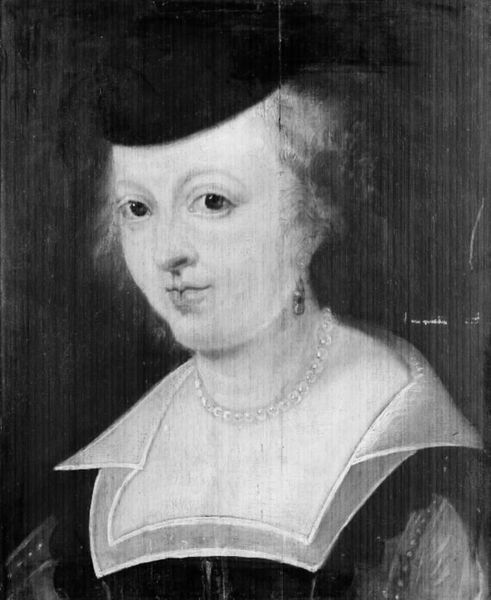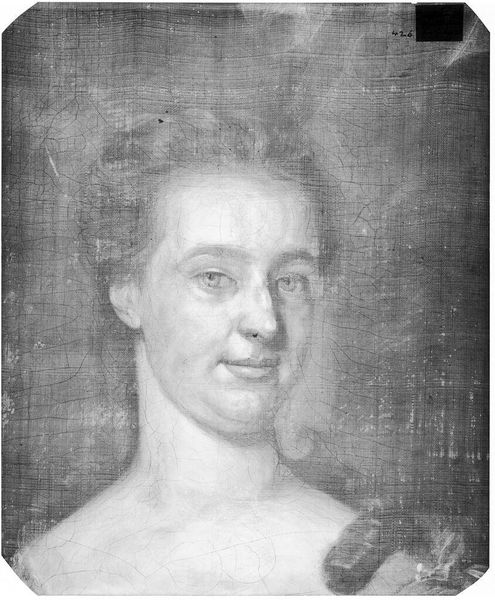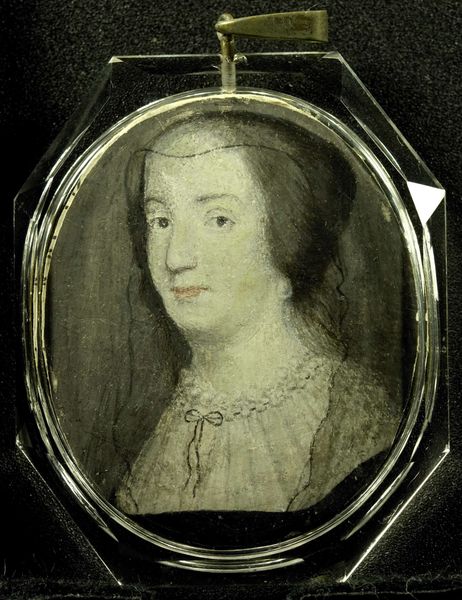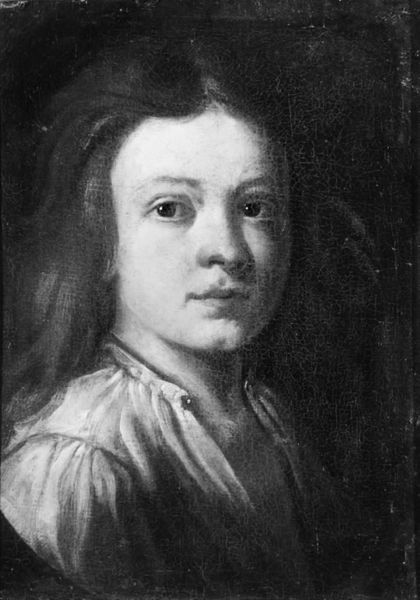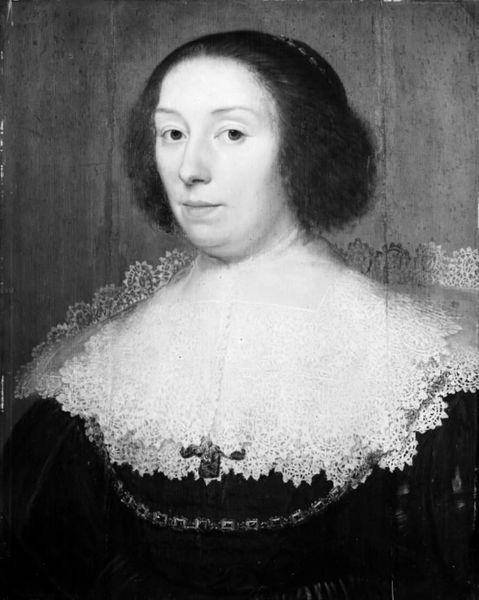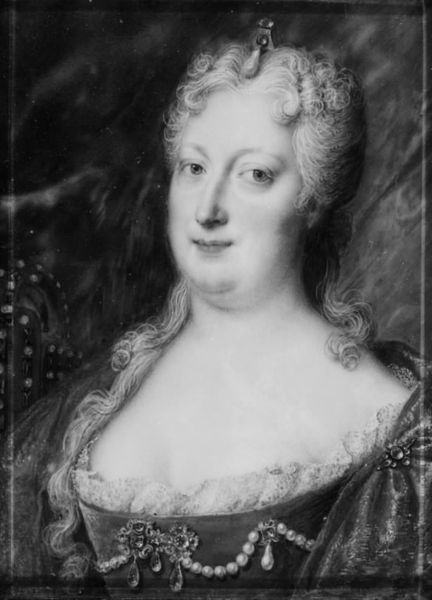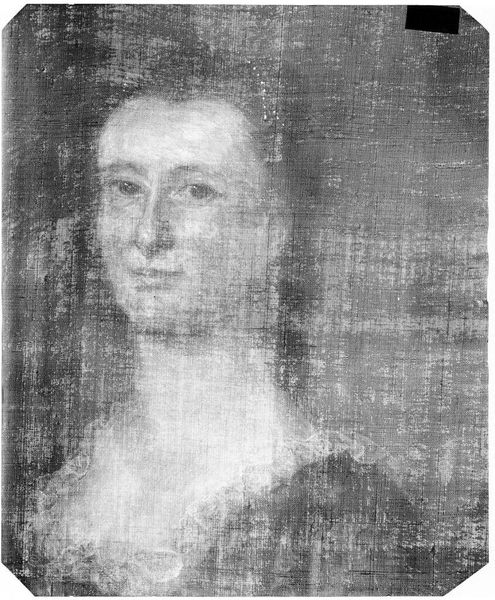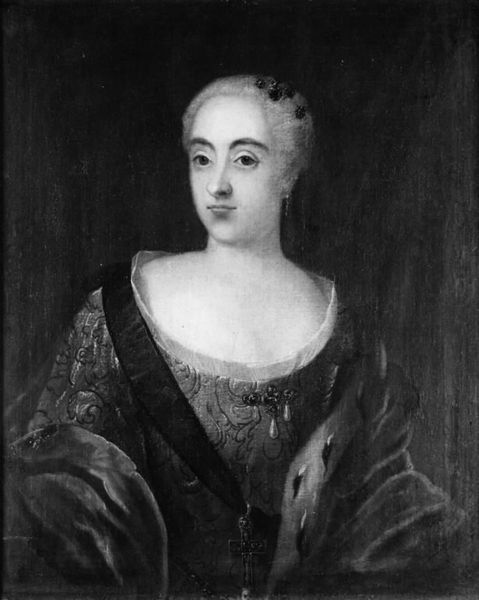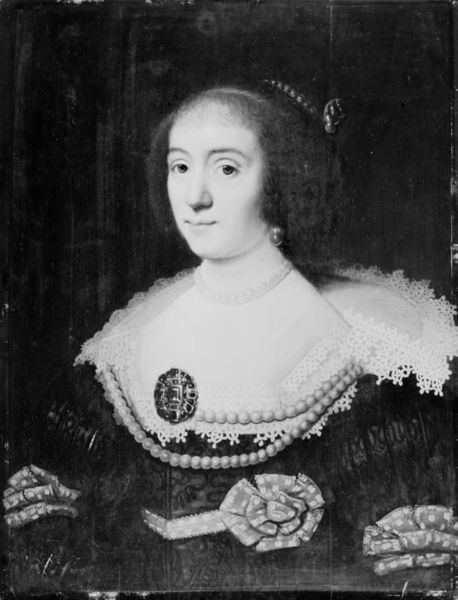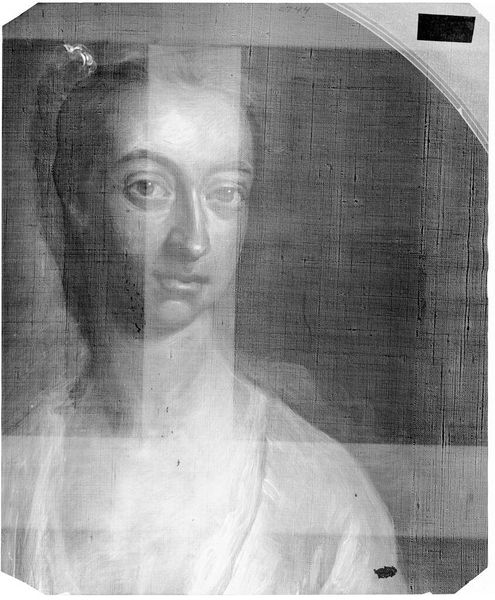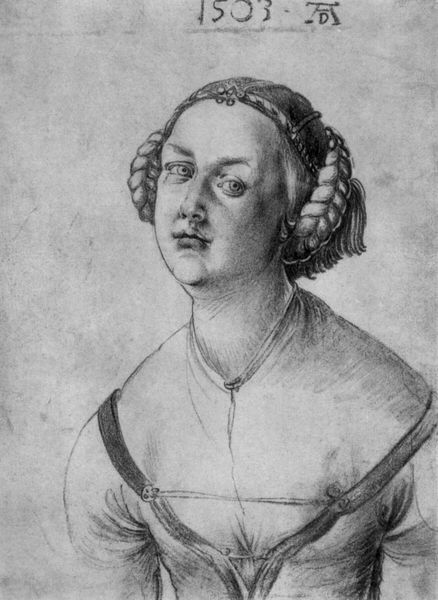
painting, oil-paint, wood
#
portrait
#
baroque
#
portrait image
#
portrait
#
painting
#
oil-paint
#
charcoal drawing
#
wood
#
portrait drawing
Dimensions: 38.8 cm (height) x 29.5 cm (width) (Netto)
Curator: This is an intriguing piece, an oil on wood painting titled "Portrait of a Lady," dated sometime between 1592 and 1890. It currently resides at the SMK, the Statens Museum for Kunst. Editor: It certainly has seen better days; the deterioration is visible. Even in its distressed state, though, there’s an arresting simplicity. Her gaze is quite direct. Curator: The medium, oil on wood, speaks to me. What kind of wood? Where did it come from? How was it treated to receive the paint? The texture visible through the paint hints at the labor involved. Was the panel prepared by the artist themselves, or by an assistant? Editor: From a social perspective, it’s interesting that the museum attributes it to an anonymous artist. What does that anonymity tell us about the status of the artist, most likely a female, if we consider the subject and available evidence? Was she excluded from the mainstream art world? Curator: It makes you think about skill as labor, definitely. And how that labour gets valued – or not – depending on the maker's status and the art's perceived use. Pearls indicate wealth; are those real or simulated, impacting the value chain that creates a portrait such as this one? Editor: The lack of precise dating adds to the mystery, doesn't it? Spanning almost three centuries… It positions the work within a broad cultural timeframe. Did styles of female portraiture change drastically during those three centuries, and, if so, how would such differences tell us where this falls in social art history? Curator: Absolutely. The physical deterioration further complicates any material analysis and speaks to a history of maybe not being valued, of neglect. Where has this object *been*, you know? Editor: A worthwhile thought. It is through the lens of our contemporary social conscience that we perhaps look deeper into anonymous portraits, particularly that of a woman, that challenges institutional art frameworks of power and cultural prestige. Curator: True. For me, understanding the social and material origins transforms the way you interpret something, whether you understand the material construction itself is as expressive as brushstroke, or you seek a re-evaluated societal approach that elevates the unrecognised work. Editor: Definitely. In many ways, its value shifts each time we view it anew through informed understanding of what's known *and* unknown about it, revealing what it meant—and can continue to mean—to the wider world.
Comments
No comments
Be the first to comment and join the conversation on the ultimate creative platform.
